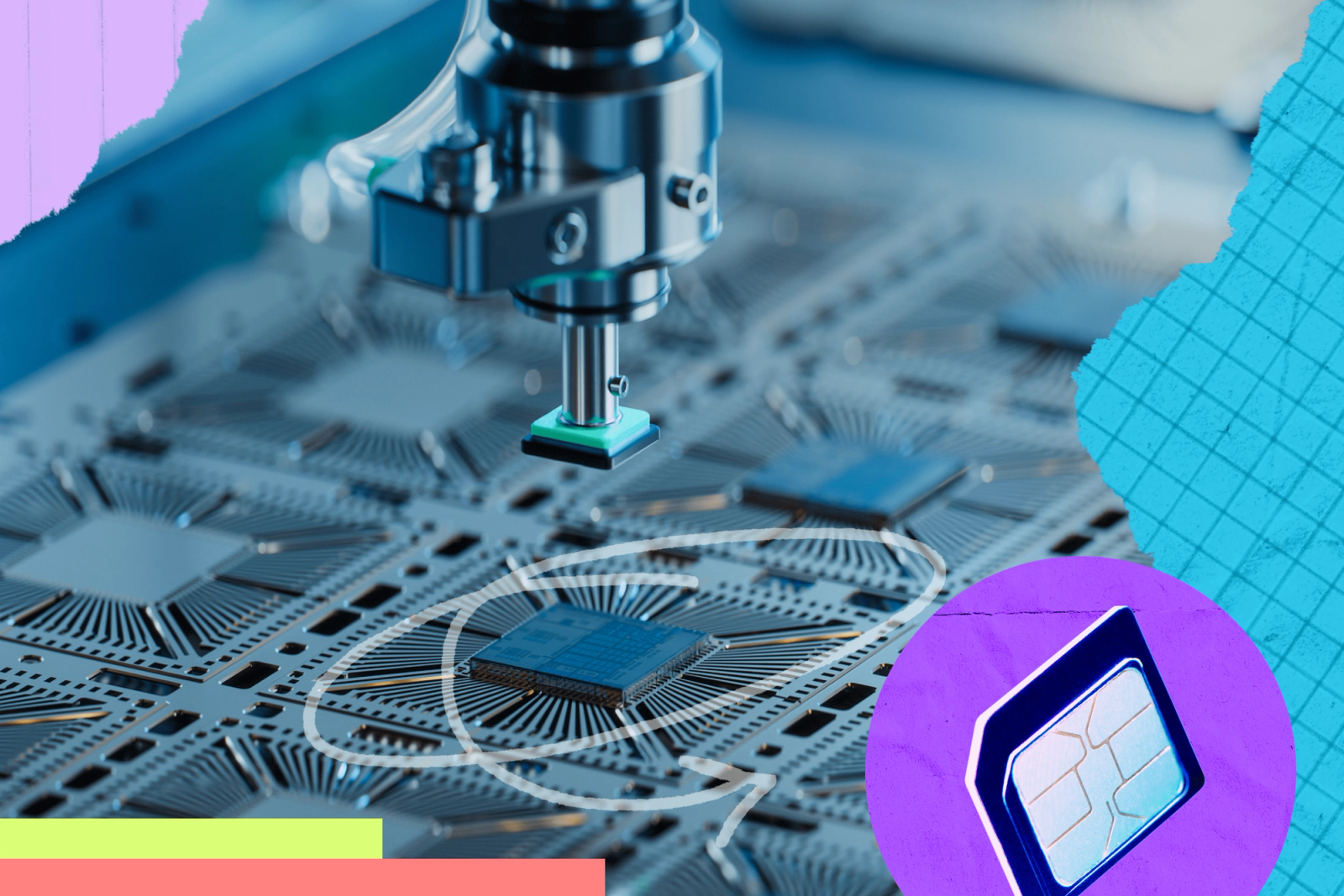What are iSIMs and do they live up to their promise?

In this post, I share a straightforward look at iSIMs – where they fit in today’s tech landscape, where they fall short (for the moment), and the promise they hold for the future.
In connectivity, change is the only constant. As we step into a new year, integrated SIMs, or iSIMs, are making some noise. This new technology is an evolution from traditional eUICC or even embedded SIM cards, offering a built-in solution that's directly incorporated into a device’s core components. The benefits on design, cost, and manufacturing are clear, but like any new tech, iSIMs have a few kinks to iron out before they can really shine.
In this post, I share a straightforward look at iSIMs – where they fit in today’s tech landscape, where they fall short (for the moment), and the promise they hold for the future.
What are iSIMs?
An iSIM is a newer development in mobile connectivity. Unlike traditional SIM cards, an iSIM is integrated into another component, such as a modem or processor. This integration means that the SIM function is built directly into the device's hardware. Ultimately, instead of installing a separate SIM card, the connectivity solution would live on the iSIM.
How’s this different from an eUICC SIM?
The key difference between iSIMs and eUICC SIMs lies in their form and functionality. eUICC SIMs are standalone SIMs that can be updated over the air and provide flexibility in choosing network providers. iSIMs are permanently integrated into a device's hardware. This eliminates the need for separate SIM components, with network authentication capabilities built into device architecture.
What advantages do iSIMs offer?
iSIM tech seeks to bring tangible improvements for design manufacturers and designers. Here’s a look at a few:
- Cost efficiency: Without a need for additional components, iSIMs can potentially lower production costs.
- Compact design: The integration reduces space requirements for SIM components, ideal for IoT devices where space is at a premium.
- Power savings: By reducing the number of powered components, iSIMs might slightly extend battery life.
- Manufacturing efficiency: For manufacturers, iSIMs simplify the production process. It's one less component to install, speeding up assembly.
Are there any drawbacks?
Despite the promise of iSIMs, they're not without their limitations. Most iSIMs coming to market this year will be locked to a single connectivity provider and may lack over-the-air update capability – this could prevent devices from switching to another profile (such as when a device attempts to connect in another country). In some cases, at factory settings, iSIMs may have no connectivity solution loaded onto them at all and require a custom onboarding process to load connectivity profiles during product manufacturing. Ultimately, this could lead to higher total costs of ownership with lost flexibility and agility or even greater downtime (e.g. lack of coverage) and lost customers.
What’s the long-term outlook on iSIMs?
The truest potential for iSIMs will come when they break free from the constraints of single-profile connectivity. It’s crucial they evolve to support a wider range of carrier profiles and offer over-the-air provisioning and management that users have come to expect. Additionally, future specifications (e.g. SGP.41), when adopted, will at least standardize profile loading during manufacture, but there are still operations and security/trust model problems to solve before profile loading can become fully streamlined across a broad range of profiles, networks, and manufacturers. When we see streamlined integrated SIM designs coupled with the versatility of eUICC, now that could transform device connectivity.
Should I give them a try?
iSIMs today might not yet be the one-size-fits-all solution they promise. Embrace the innovative approach to connectivity, but make sure it lines up with your specific needs. It's smart to consider whether they're a better fit for you right now compared to time-tested eUICC solutions that offer a full range of SIM and connectivity capabilities.
The real excitement kicks in when iSIMs start building in eUICC's versatility – that's when we'll see devices reaching new levels of flexible, seamless connectivity and with a smaller bill of materials.